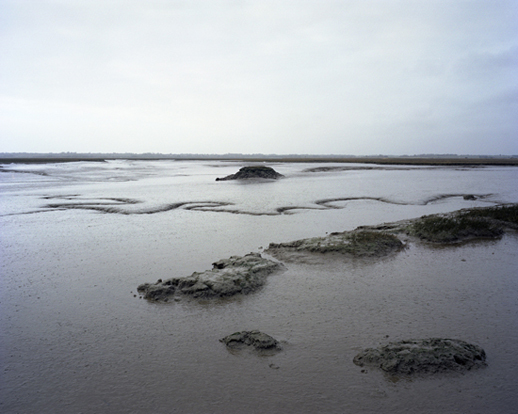The writer Ken Worpole and the photographer Jason Orton should need little by way of introduction to regular readers of Caught by the River. Their book, 350 Miles: An Essex Journey, has been a constant seller from our shop since the day it opened and Ken has made many informed and valued contributions to the site. So, I’m sure you’ll welcome word of their new project as warmly as we have. Ken says:
It is designed to record work in progress, towards a new book we hope to publish later in the year on ‘The New English Landscape’.
We’ll be posting something up every week or so, and hope you’ll enjoy it, and the links it provides to other people’s work we ourselves enjoy.
Here, published by kind permission, is their first post. You’ll find a link to the blog below the words.
Horsey Island, Essex. By Ken Worpole.
Jason and I have been doing a lot of walking this winter along the Essex coast – and even spending time on some of the smaller islands – while thinking hard about how to join Martin Amis’s ‘war against the cliché’ when it comes to writing about and photographing these tidal fringes. We spent several nights on Horsey Island in Hamford Water in late February, before the wildfowl breeding season, and got up in the dark for early morning forays along the seawalls, peering into the gloom to try to distinguish sky, sea and mud from each other, with little success. It is all very fluid and mysterious out there.
Crossing the causeway to Horsey Island is an hallucinatory experience. Unusually, the causeway is below the level of the adjacent river-bed, so we were driving almost at eye level with the mudflats and flowing watercourses on either side, where the waders seem almost unperturbed, making it possible to pass within six feet of a curlew or cluster of elegantly-crested lapwings. The crossing is a white-knuckle ride from side to side and up and down through the pot-holes and small residual sea-water ponds left by the tide.
The islands of Essex are too little known. Apart from their wildlife conservation qualities, they have also served in the moral rehabilitation of people, whether at Osea Island near Maldon, where conscience-stricken brewer, Frederick Charrington founded a Temperance Hotel – later being adapted as sanctuary for those with addiction problems – or on Canvey Island where ‘The Girls’ Bungalow’, otherwise known as the Social Institute, was established by Miss Clara James in 1909 (who later founded the Labour Party on the island) as a holiday home for working girls from East London. Canvey, where for a time I lived as a child, was also the setting for Hotel Ozonia, a temperance and fresh-air settlement, which in 1938 advertised over 60 rooms available for healthy recuperation.
Less benignly, Bramble Island, also located like Horsey Island in Hamford Water, has been used for developing, testing and storing explosives, and is still very much out of bounds. Foulness Island, further south on the northern edge of the Thames Estuary, has for more than a hundred years been sequestered for weapons development and testing by the military. The indigenous community on Foulness was once so isolated from the wider world that the women of Foulness wore Dutch costume as normal attire until the First World War. Even I can remember carnival time on Canvey when we all had to dress up as little Dutch girls and boys.
